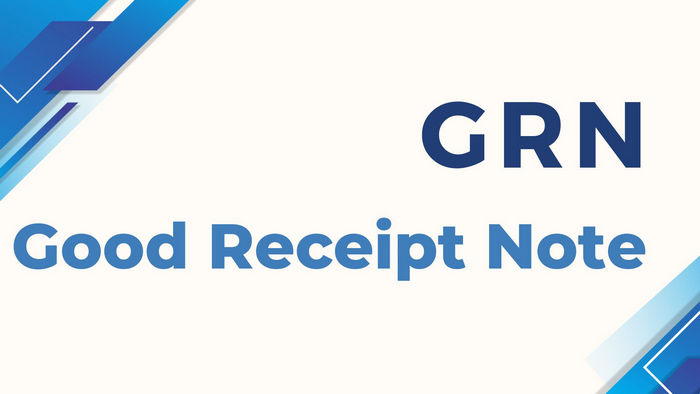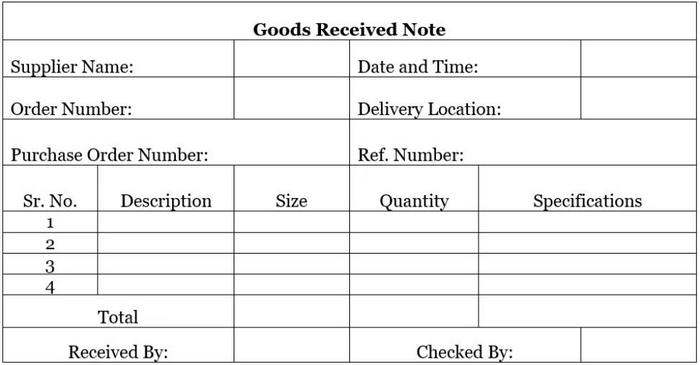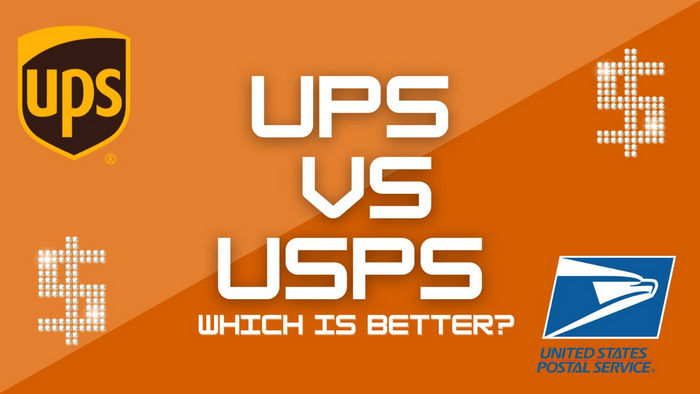What is Goods Receipt Note: A Simple Explanation
GRNs, or Goods Receipt Notes, are documents that acknowledge the seller has successfully delivered goods to the customer. This receipt confirms that the goods have been delivered without damage, exposed packaging, or wrong products.
What is GRN: A Technical Explanation
GRNs (Goods Receipt Notes) are two-way receipts between the seller and the customer that confirm the successful delivery of commodities to all parties to the satisfaction of both parties by maintaining a high level of quality and quantity without any damaged goods, tampered packaging, missing goods, or incorrect items being delivered.

Why Do You Need a Goods Received Note?
Goods received note (GRN) serves as an important document for all parties involved in a trade transaction. As a means of confirming both parties have fulfilled their part of the contract, the goods received note serves as a record for future reference, if necessary. The following are a few major uses of a GRN.
- Keeping track of supply chain operations
- Management of inventory
- Record keeping
- Prevent wrong deliveries
- Safeguard from malpractice
- Avoid errors in the delivery system
- Maintaining liability of parties involved
What does GRN look like and what does it contain?
Here is a sample format of the goods delivery note.

Both parties may include or exclude information depending on the goods delivered. As an example, if the goods are shipped by a third party, the GRN can also include a column for the shipper's signature.
Receivers are responsible for issuing goods received notes. A GRN is issued by the buyer's procurement department and it is the responsibility of that department to record the relevant information.
The following information is usually recorded on a goods delivery note.
- Information about the shipper
- Detail information about the product, such as the name, quantity, size, type, and technical specifications.
- Time of delivery
- Address of delivery
- Quantity of commodities
- Information about the receiver
- Name of the recipient organization
- Signature of the recipient
- Order number
In order to keep proper records, goods received notes should contain the information listed above.
WHO issues a goods received note?
Goods Received Notes are internal documents produced after an order is received and inspected. Therefore, the Goods Received Note is issued by your store's team. Creating the Goods Received Note is the responsibility of the stores' department.
When is a Goods Received Note Issued/Prepared?
Goods Receipt Notes are issued or prepared in the event that the goods received are in the perfect physical condition and comply with the requirements specified in the Purchase Order.
The receiving company representative may reject the entire lot or a part of it if all or some of the goods received are not in compliance with the specifications, or if some are damaged during transportation.
If such an event occurs, the Goods Receipt Note will only be prepared for the approved goods, and the shortfall will be added to the pending/revised purchase order.
Goods Received Note VS. Goods Dispatch Note: What's the Difference
A goods dispatch note is issued by the supplier when the goods are shipped to the buyer.
Goods Received Note and Goods Dispatch Note contain the same information. The supplier issues it for its own records, however.
A copy of the goods dispatch note is usually given to the shipper of the goods. It can be used as a validating document by the shipping company when delivering the goods.
Goods Received Note VS. Goods Dispatch Note: What's the Difference
A goods delivery note (GDN) is also issued by the supplier. The information on it is also the same. However, a GDN is issued to the buyer as a means of verifying the goods received.
Using the GDN, the buyer can confirm the delivery of the goods. Upon physically verifying the goods, the buyer will sign the GDN on behalf of the seller.
A GDN can then be used for internal records by the seller to prove that the goods were delivered. To further validate the details of the goods received, the buyer can issue a GRN later on.
When all these documents are issued, there may be disputes and differences. Both parties must agree on all details before an invoice can be paid.



